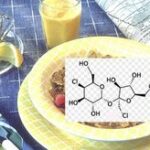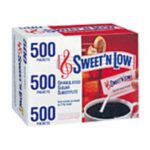Saccharin (Sweet’N Low), aspartame (NutraSweet and Equal) and sucralose (Splenda) are a few of the better-known artificial sweeteners, also known as sugar substitutes. Anyone who’s used them knows the sweetness they offer, without the calories of sugar. Some in the diet and healthcare worlds consider them to be helpful “free foods,” good for weight and diabetes management. Others consider artificial sweeteners to be little more than poison and possibly responsible for a myriad of health problems, even contributing to obesity.
There’s much confusion and many questions about whether artificial sweeteners are “healthy” at all or just “healthier” than sugar or corn syrup. Are we really doing something good for ourselves when we choose “diet” beverages and “lite” foods? Or is choosing a “diet” pop or “lite” drink over a sugar-laden beverage just choosing between the lesser of two evils?
There’s no argument that sugar and high fructose corn syrup provide a person with excess empty calories. They also cause a spike in blood sugar, which results in an insulin surge. Insulin is known to promote increased fat, and it also stimulates appetite. That being said, diabetes specialists at the Mayo Clinic permit the use of artificial sweeteners for diabetic patients because they are said to have no affect on blood sugar. According to Mayo, the American Diabetes Association also approves the use of saccharin, aspartame and sucralose; the Calorie Control Council supports the use of these products, as well.
Saccharin (Sweet’N Low) is one of the oldest artificial sweeteners, having been around for more than 100 years. It continues to be widely used, and it’s use is generally supported by doctors, dentists and dietitians as a non-caloric sweetener. It’s used as a powdered tabletop sweetener for coffee, cereal and such, as well as in baked or processed foods like cookies and pastries, jams and jellies, chewing gum, salad dressings, etc. Saccharin is one artificial sweetener that’s also used in pharmaceuticals, vitamins and cosmetics products such as lip gloss.
Aspartame (NutraSweet and Equal) has been around a little more than 40 years. It’s unique when compared to sucralose or saccharin in that when it enters the body, it breaks down into two amino acids that are also found naturally in meat, milk, fruits and vegetables. Aspartame is said to taste similar to sugar, but is 200 times sweeter tasting than sugar. Like saccharin, aspartame is used as a tabletop sweetener and in a variety of food products. In 1983, the FDA approved the use of aspartame in carbonated beverages.
Sucralose (Splenda) is the only artificial sweetener actually made from sugar, which renders it useful as a sugar replacement in baking and cooking in home kitchens. Discovered more than 30 years ago, it tastes like sugar, but is 600 times sweeter than sugar.
In researching these particular artificial sweeteners and why they’re used, I found just three primary reasons that were consistently given: weight loss/control by managing calories, diabetes management and improved dental health or fewer cavities. Frankly, with all the hoopla that surrounds the use of artificial sweeteners, I expected to learn something really compelling – something that would tell me my life and health will definitely or dramatically improve with consistent use of any one of the products. I cannot say that was the case.
Instead, I learned that there is more controversy than I could reasonably sort through. Many well-respected individuals, including renowned health advisor Dr. Andrew Weil, have expressed their concerns about artificial sweeteners, particularly aspartame. Although I was unable to find “proof” that aspartame, saccharin or sucralose cause or exacerbate health problems, I did learn that the FDA requires products containing aspartame to warn consumers that aspartame contains phenylalanine. Pregnant women with high levels of the amino acid phenylalanine in their blood, people with the disease phenylketonuria and those with advanced liver disease have been found to have a problem with aspartame because they have trouble metabolizing phenylalanine.
One thing for sure, these products all involve the use of artificial chemicals, and it’s probably better to eliminate their use. That’s not to say that occasional use of any of these three artificial sweeteners absolutely presents a great health risk. However, for me and my family, moderate amounts of sugar is preferred to artificial sweeteners.
For those who enjoy a little sweetness in their diets and don’t wish to use either sugar or artificial sweeteners, there is still one zero-calorie natural sweetener that will fill the bill: stevia. Stevia is a South American herb that can be purchased in either whole-leaf or extract form. It is 200 to 300 times sweeter than sugar and is safe for diabetics. When used as an extract, the powdered herb is dissolved in water and used with a dropper. Stevia sounds like a wonderful alternative to either artificial sweeteners or tabletop sugar and has been added to my family’s sweetening options.
Resources:
Mayo Clinic; http://www.mayoclinic.com/health/artificial-sweeteners/AN00348
Calorie Control Council; http://www.caloriecontrol.org/index.html
Dr. Andrew Weil; http://www.drweil.com/



